Removing Seized and stubborn Nuts and bolts
Don't let a seized bolt spoil your day (again)
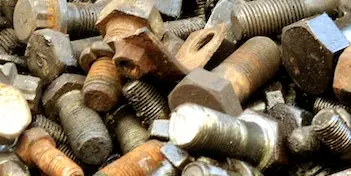
Removing Seized and stubborn Nuts and bolts
A Seized nut or bolt can be very frustrating and turn a quick and simple job into hours of hassle, pain and frustration. Hopefully these tips will help to remove the stress of seized nut and bolt removal. One of the best tips is simply to remember when your finished and your putting the nuts and bolts back it will be probably be you who has to take them out again, so take some time to make sure that when you reassemble, you use a copper based grease to help avoid future problems.
non-destructive Removal Methods

1. Preparation is key ! If you know you are going to be doing a job, then it is advisable to spray the nuts and bolts you need to take off with penetrating oil (WD40 being perhaps the most famous of brands). It is advisable to spray the bolts a good few hours in advance, This allows the oil to soak in and do its job, it is sometimes necessary to continue to spray as the nut or bolt is removed to provide lubrication especially over very rusty threads. However this little bit of forethought can be the difference between a stiff nut and a stuck nut.
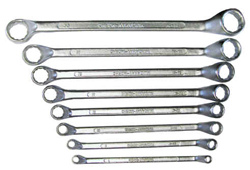
2. Lord of the Ring (spanner). If you've been using an open ended spanner, and failed to get a decent grip then, provided you can get one to fit, try using a ring spanner as these grip all round the nut or bolt and therefore you should be able to get more purchase not only that but as these tend to be a little longer in length you should get more leverage as a bonus..

3. Socket To Them. If this does not work then
try a socket (if possible one from an impact socket set as these
are the hexagon type) but do not use a ratchet as applying heavy
pressure will cause damage to it. For increased leverage use a
bar to increase its length and if necessary you can use a soft
faced hammer can be used to shock the bolt into submission with
some "gentle" taps.
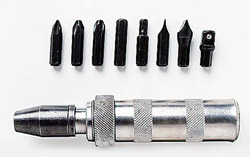
4. Prepare for Impact! Impact drivers are a very useful tool and work by a combination of twist and shock action but they require quite a lot of access room and hence it is not always easy to get one of these tool to fit.

5. Feelin' Hot Hot Hot. Heat can be used to loosen the grip of a siezed nut, this is because the metal expands increasing the thread gap between the nut and bolt and hopefully breaks grip of the rust. A gas welding set or a blow torch can be used but make sure you are not going to set fire to anything or cause damage to any paintwork. The nut can be heated to cherry red if required but this in not always necessary . Electcric paint stripping guns and other hot air blowers (although I've never tried a hairdrier it should work to some degree) all provide some expansion all of which weakens the grip of the nut making it easier to remove.
Destructive Removal Methods
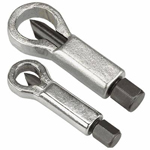
1. Doing The Splits? If you don't mind
sacrificing the nut then nut splitters can be used and these
work by putting the splitter over the nut and then a sharp blade
is wound down onto the nut. This cuts into the nut and
eventually will split the nut for easy removal. If you are
careful then doing this will not cause damage to the threads of
the bolt.
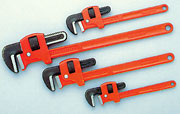
2. Stilson. If the problem your having is the spanner slipping off or the nut and bolt has become rounded off then a pair of stilsons are a good bet. The simple yet effective design of this tool actually grips tighter the harder they are turned but they will probably damage the head of the bolt or the nut.
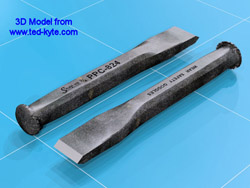
3. Chiseled features. If you do not have
access to a nut splitter then a cold chisel can be used to give
the same result, alternatively a hacksaw can be used to cut off
the side of the nut. Make sure to wear the appropriate safety
gear as flying bits of metal can cause serious damage to your
eyes.

4. The Professionals. Professional car restorers will weld a good bolt onto the damaged one so that good purchase on the "new" bolt will be achieved. Also the process of welding on the new bolt will generate a lot of heat and will also help to loosen the grip.
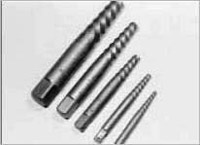
5. Extractor. Stud extractors can be used, these work by drilling and tapping and inserting a tool steel extractor which should hopefully extract the bolt when the tool is withdrawn. The problem with these are that if the extractor snaps (not uncommon) then you are left with a stuck bolt with half a tool steel extractor in it and tool steel is very difficult to drill out.
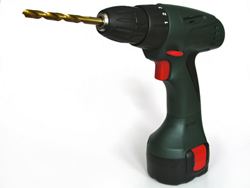
6. You know the drill! The final last resort is to drill out the bolt or stud, this is done by using a drill only slightly smaller than the thread of the bolt, if this is done carefully then the thread of the hole should be intact and can be cleaned up with a tap. The disadvantage is that drilling out will cause swarf and bits of bolt to go everywhere and if you are anywhere near engine components and these bits get inside then an engine rebuild could be on cards.